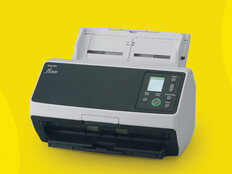2. Cultivate a Sense of Device Ownership Among Students
Jason Bailey, director of innovation and design at the State Educational Technology Directors Association, says that students must feel ownership over their devices.
“If students feel like these are their own devices, they’ll take care of them,” he says. “If you give a freshman a Chromebook and you say, ‘OK, you’re going to use this for four years and take it with you,’ they are more likely to treat it better.”
RELATED: Learn about the charging technologies that schools are using to keep learning on track.
3. Make Student Devices an Integral Part of Everyday Learning
Bailey adds that fully integrating devices into the curriculum leads to better student preparation. Administrators can help by providing a consistent learning experience through universal design and offering professional development for teachers.
“Students have to know that the devices are relevant to the learning process and know that if they care about school, they’re going to need their devices ready and charged,” he says.











